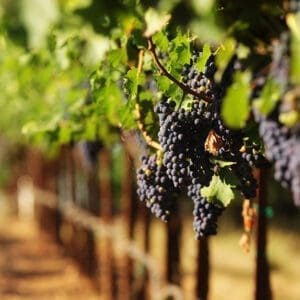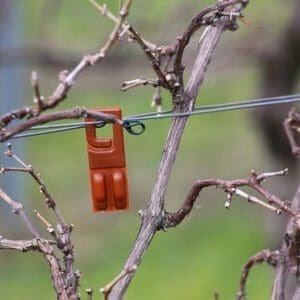Managing the Menacing Vine Mealybugs
Vineyard managers and estate winery owners who work with Wilbur-Ellis have a distinct advantage when battling vine mealybugs. That advantage is the combination of Wilbur-Ellis’ in-field agronomic knowledge, technology systems and the historical data the local Wilbur-Ellis location maintains on each field.
“One of the values we bring to customers is the depth and breadth of knowledge we have on some of these properties,” says Armon Azevedo, Wilbur-Ellis agronomist in Healdsburg, California. “We have decades of crop production history, so we know what the soil nutrient levels are, what the disease and insect incidence has been as well as the treatments applied and the production performance year to year.
“Unfortunately, the biggest challenge of growing grapes is that once vine mealybugs are established in a vineyard, you are managing them for the entire life of that vineyard,” Azevedo points out. Vine mealybugs create costly damage in the form of honeydew that drops onto the bunches and vine parts, making table grapes unfit for market and limiting the use of wine grapes except when the contamination is at low levels. This almost wax-like honeydew substance is also an ideal growth medium for black sooty mold, and the pests can transmit grapevine leafroll-associated viruses.
In the fight against vine mealybugs, the Wilbur-Ellis combination of information and expertise works year-round to help protect clean vineyard blocks from infestation and to minimize the spread and damage within blocks plagued by this prolific and disease-spreading pest.

Vineyard defense begins with a good offense.
The starting point for protecting a vineyard from mealybugs begins behind the scenes, knowing the vineyard and analyzing its performance and the related metrics.
“I was taught that you can’t manage it until you measure it, and that is how we help our customers manage their vineyards, their investments,” says Azevedo. For this task, Azevedo uses AgVerdict®, a data platform and decision-making tool that allows storing, accessing and managing agronomic and production data specific to each block, field and farm.
Each winter, Wilbur-Ellis agronomists are at work, using the AgVerdict system, evaluating the history of each block, pest pressure, nutrient profile and the block’s yield over time. In the case of mealybugs, they’re asking, “was there a high incidence of leaf roll or high levels of infestation creating an economic problem that required treatment?” If the answer is, “Yes,” defense begins with vineyard monitoring.
Scouting starts early.
Schedules are built for in-field scouting from before bud break through harvest. Early season scouting checks look for telltale signs such as vine staining from honeydew secreted by the insects the previous season and emerging insects. Flags are set to ensure timely placement of pheromone traps to capture the flying male mealybugs, which dictates when to begin using mating disruption.
“If you do the math, one female vine mealybug can produce 200 eggs, and in our area, have up to five generations. That’s the potential for 1,000 more mealybugs to be produced in a season,” says Azevedo. “This is why we’re so diligent and proactive with monitoring, so we can time mating disruption to be most effective.”
Treatment is individualized.
Though treatment for vine mealybugs is different and specific for each situation, the next step in vineyard defense is typically application of a systemic soil insecticide to limit the mealybugs feeding on the foliage on the canopy. From May on, foliar insecticides are used to control the pest.
Azevedo points out that pest control using conventional insecticides requires a holistic system and team approach involving pest monitoring, understanding the pest and its lifecycle, choosing the right product, making a timely application and rotating active ingredients to avoid potential for pesticide resistance to develop. When making recommendations, Azevedo also turns to pesticide label information available within AgVerdict for product selection and correct recommendations for treatment rate and timing.
“Our conventional insecticides are highly effective and safer than they’ve ever been, but they’re also a single mode of action, so we have to continually be adjusting and changing the modes of action we’re using in order to prevent development of resistance to the products,” he explains. “The products also don’t last indefinitely.”

In organic systems, control revolves around sanitation, beneficial insects and biological controls.
When vine mealybugs are present in organic vineyards, control is difficult at best. Sanitation is the key because the female and mealybug larvae (nymphs) cannot fly, but are carried by equipment, people and infested vines, grapes or winery waste.
“This is where partnership between the grower and Wilbur-Ellis is important. Knowing which blocks have mealybugs in them, what the potential is for control and having a plan,” says Azevedo. “Sanitation becomes highly critical — if a crew starts the day in an infested block, it’s important to spend the entire day in infested blocks, and that machinery is pressure washed before it is moved from an infested block to a clean block.” Proper handling and disposal of infested pomace piles or cluster stems is also critical.
In organic and even some conventional vineyards, biological controls such as beneficial insects are often the go-to for vine mealybugs. Optimizing their effectiveness requires strategic control of ant populations since several species attack beneficial insects.
“The ants thrive on honeydew, so they aren’t just going to allow us to release beneficial insects to kill the mealybugs, so ant control is critical and it’s challenging, especially in an organic farming system where we must work within the guidelines of organic certification,” says Azevedo.
For help controlling vine mealybugs in your vineyard, contact your nearest Wilbur-Ellis location for the Wilbur-Ellis pest control advisor nearest you.

